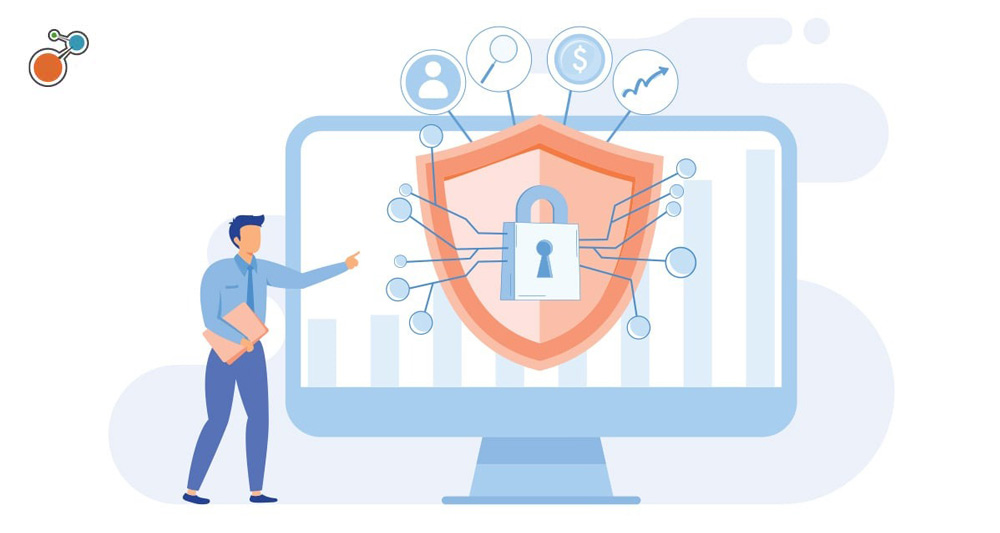Every company and organization is vulnerable to potential risks and liabilities, but hospitals and healthcare facilities are some of the most exposed. From private data in patient records to medical errors that cause harm, risk management in healthcare impacts both the administrative and clinical sides. The American Society for Health Care Risk Management defines healthcare risk management as the policies and practices intended to establish a safe healthcare facility that prioritizes patient safety by operating in compliance with financial, medical, and legal regulations.
Risks can damage a healthcare organization’s finances, business processes, employee satisfaction, liabilities, and more. While you can’t predict every potential exposure, having a healthcare risk management plan in place can minimize the impact of errors — and even prevent them from happening in the first place. Take a closer look at ways to prevent some of the common risks that healthcare organizations face.
The Benefits of Risk Management in Healthcare
While you may not know what problems wait around the corner, a risk management plan gives you guidelines to get ahead of these risks or manage their impact if they do occur. That’s one of many benefits of having a risk management plan, including reducing costs, improving compliance, enhancing reputations, and increasing efficiency.
Reduced Costs
Many healthcare organizations have risk management plans for situations that can impact finances, such as medical errors, malpractice claims, compliance violations, reimbursement levels, and insurance claims. A study by World Hospital Health Services found that healthcare risk managers can reduce the costs of these medical errors with clear and methodical risk management plans.
A risk management plan gives healthcare organizations a framework for finding ways to save costs and avoid risks that could impact the bottom line. In addition, by reducing the chance that risks could happen, you are also reducing the costs associated with recovering from them. That’s why identifying potential risks can reduce your liabilities, resulting in paying fewer fines and penalties.
Improved Compliance
A risk management plan gives you a 360 degree look at the potential risks your organization faces, including compliance with industry regulations. When you make plans to identify, analyze, and manage critical risks, you should prioritize compliance both with internal regulations and all applicable city, state, and federal laws.
Take, for example, regulations around shifts and schedules. Some healthcare regulations look closely for situations that can create potential patient risks, like the overworked and overtired medical staff. One study published by JAMA Internal Medicine demonstrated the need for risk management strategies that balance hospital staff’s sleep schedules with patient safety concerns.
Another crucial aspect of risk management in healthcare is compliance with HIPAA, also known as the health insurance portability and accountability act, which mandates that all patient data stays private and protected. A risk management plan that prevents data breaches can keep your organization compliant with privacy regulations. Laws, regulations, and compliance standards can frequently change so healthcare risk management plans must also include ways to stay updated on current information.
Enhanced Reputation
A strong risk management plan can increase trust in your healthcare organization, which can increase the number of patients you see. A recent Google study revealed that more than 90 percent of prospective patients preferred to select a hospital based on reputation rather than whether or not it was covered by their insurance.
A healthcare organization’s reputation hinges on a risk management plan that includes communication processes. Examine your current communication strategy and policies, then develop a risk management plan that includes reputation management as one of its focus areas. Your plan should include how to respond to the public during specific times of crisis, like a data breach or malpractice suit.
Increased Efficiency
When many healthcare organizations begin risk management planning, they often uncover policies implemented inconsistently, unmet patient care goals, and inefficient internal workflows. Healthcare risk management will seek to streamline processes and shore up alternative resources for productivity to stay high even when facing potential risks. For example, one hospital found, through a risk management process, that cardiac stress-testing lowered the risk of invasive cardiac procedures. Using a risk management plan in this way not only improved efficiency, but it also reduced some of the other risks specifically facing the healthcare industry.
Risks Faced by the Healthcare Industry
Healthcare has many of the same risks as other industries, such as worker’s compensation and data breaches. However, the impact of these issues can be compounded by risks specific to healthcare settings, such as medical malpractice. This quick overview of the risks healthcare organizations face can help guide the creation and implementation of effective risk management strategies.
Medical Malpractice
The Medical Malpractice Center claims that between 15,000 and 19,000 medical malpractice suits occur every year in the United States. Medical malpractice happens when a healthcare professional gives substandard treatment that causes injury, harm, or death. Keep in mind that countries and even states all have different standards and regulations for medical malpractice, which can increase the risk of a provider unintentionally providing inadequate care.
Healthcare organizations can decrease their vulnerability to malpractice by developing a comprehensive risk management plan that prioritizes patient safety and care. Analyze past malpractice situations to create a plan for identifying and addressing potential issues before they happen.
Workers Compensation
Workers’ compensation claims cost companies more than $62 billion each year, according to research by Simply Insurance. Healthcare workers can be injured on the job or suffer from chronic pain related to their work. Using effective workers compensation claims management software, hospitals can identify potentially high-cost claims early and streamline the processing of claims, thereby saving time and money. Software that includes incident reporting, claims tracking, and predictive analytics can often lead to the development of more proactive plans.
Privacy Concerns
HIPAA is only one of many regulations when it comes to protecting patient privacy, and violating any one of them can have big consequences. From leaving phone messages to document disposal, privacy is an aspect of all clinical and administrative procedures. Plus, patient confidentiality is crucial for creating trust between patients and medical professionals, leading to better patient care and an improved reputation. That’s why an effective healthcare risk management plan needs to have privacy front and center.
Property and Casualty
Healthcare organizations are often big places, which means there can be property risks to consider in a risk management plan, as well as medical ones. While that may not be the first place your mind goes in a healthcare risk management plan, property claims software should be at the top of the list for organizations that own or lease a building. Your risk management plan should make sure your location is compliant with regulations for properties where healthcare visits occur.
Enterprise Risk
Enterprise Risk Management software is another tool that larger organizations and systems can use to enhance operational procedures. Including this element in your risk management plan will help cover other departments in your system that may be crucial to operations, but do not provide direct patient care. From policies in the billing department to human resources regulations, understanding your enterprise risk is essential for a strong foundation for any organization.
By addressing risk and reducing exposure, healthcare organizations can be proactive about protecting data and promoting patient safety, which also impacts their profits, accreditation, reimbursements, and reputation.
Ways To Reduce Risk in Healthcare
Healthcare systems have many options when it comes to designing, implementing, and maintaining risk management plans. However, the most effective plans will include potential risks, prevention, technology, and policies.
Identifying Potential Risks
Getting ahead of risk is much easier to resolve than responding to an incident. Risk management plans for healthcare should include identifying potential liabilities through, frequent audits, and compliance reviews.
Developing Protocols for Prevention
When you can identify potential risks, you can put in place plans that not only resolve them but can also possibly prevent them. Keep your staff engaged with prevention protocols through regular training and reviews of policies and procedures. Create feedback loops so you can monitor how well guidelines are understood and followed.
Implementing Risk Management Technology
Risk Management Information Systems can strengthen a healthcare organization by offering real-time visibility into potential risks. Not only can risk management technology keep you in compliance by tracking information, but it can also lighten the workload by automating certain tasks. With user-friendly healthcare incident reporting tools, all healthcare staff can easily be trained to properly utilize risk management tools.
Creating Policies and Procedures
Establishing clear policies and procedures will help your risk management plan be more effective. Every member of a healthcare organization has a stake in risk management and they hold some responsibility for seeing these plans implemented correctly. Setting risk thresholds and developing response protocols can help your staff understand their role in identifying issues, reducing exposure, and preventing risks.
It’s easy to see how the significance of risk management in healthcare cannot be overemphasized. With a comprehensive risk management plan, healthcare facilities can prioritize patient safety, while also reducing costs and even readmissions. The right kind of risk management technology, along with experienced professionals, can help create risk awareness within the whole organization. We can never expect a completely error-free hospital. Having a risk management plan, however, can help identify issues before they happen and resolve them quickly when they do, all while creating a culture of risk prevention.
For more on managing risk in the healthcare industry, download our ebook, Rx for Risk: ERM in the Healthcare Industry, and check out Riskonnect’s Healthcare software solution.





